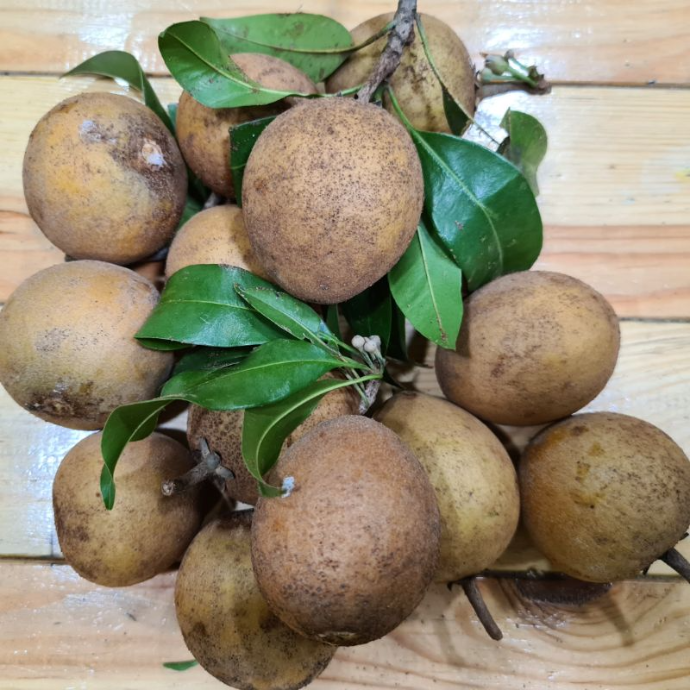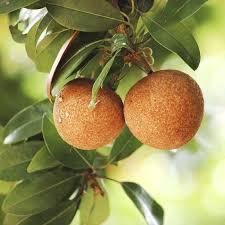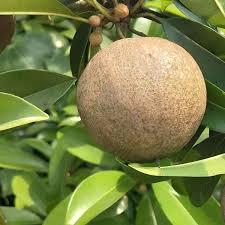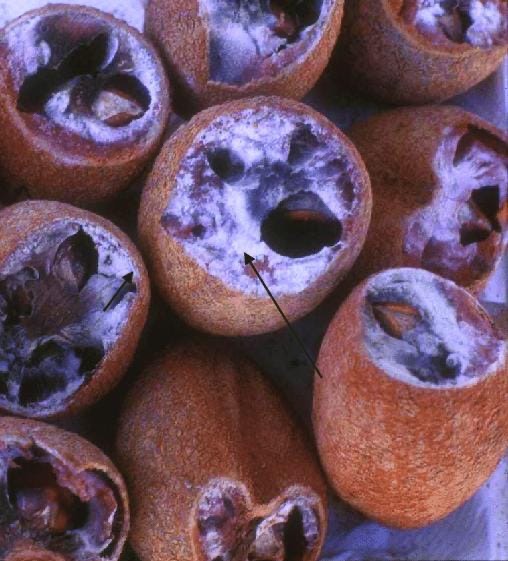Sapota Taiwan Plant
Sapota taiwan, possibly referring to a specific variety of Sapota, may have varying care requirements. Generally, provide well-draining soil, appropriate sunlight, and regular watering. Pruning and fertilizing practices may vary based on the specific characteristics of this plant.

Habit
Tree
Height
5-15 m
Growth
Fast
Soil
Well-drained loamy
Shade
Full Sun
Moisture
Moist
Edible
Yes
Medicinal
Yes
Origin
India
Climatic Condition
Tropical, Subtropical
Temperature (°)
20-35°C
Humidity (%)
50-80%
Potting media
Field soil
Fertilizers
Organic, NPK-rich
Watering
Regular
Plant Weight
200-600 g
Flowering Time
Year-round
Soil Ph level
5.5 - 7.5
Water Ph level
5.5 - 7.5
Soil EC
1-2 dS/m
Yield Per Plant
166kg/tree
NPK ratio
10:05:05
life Span
30-50 years
Health Benefits
Rich in fiber, good for digestion
Suggested Grow Media or Potting Mix ?
50% loam, 25% compost, 25% sand
Suggested Fertigation/Fertilizers
Fertilize every 6 weeks with a balanced fertilizer.
Common Diseases and Remedies
leaf spot , fruit rot
Rotted fruits become soft and dark brown and later numerous acervuli are seen in rotted zones.
spray neem oil
Spraying Dithane Z-78 or Topsin or Bavistin @0.1% at monthly intervals can control the disease.
What Is An Sapota Taiwan Tree?
Sapota (Achras zapota) commonly known as chiku is mainly cultivated in India for its fruit value, while in South-East Mexico, Guatemala and other countries it is commercially grown for the production of chickle which is a gum like substance obtained from latex and is mainly used for preparation of chewing gum.

Sapota taiwan
1. Location
In India, the fruit or the tree is commonly called as Chikoo or Sapota. This fruit is cultivated widely in Gujarat, West Bengal, Andhra Pradesh, Maharashtra and Tamil Nadu. The cultivation of the Sapota tree in India is majorly done due to the production of fruit, which is famous for its flavour.
2. Sunshine
sapota (also known as chiku or sapodilla) plants do need full sun to thrive and produce fruit. Sapota plants are native to tropical regions and are accustomed to receiving plenty of sunlight.
3. Soil
It can be grown in a variety of soils but deep alluvium, sandy loam, and well-drained medium black soils with pH 6.0-8.0 are ideal for its cultivation. However, shallow clay soils underlaid with hard pan or high calcium contents are unsuitable for sapota cultivation.
4. Hydration
Sapota, being a tropical crop can be grown from sea level upto 1200 m. above m.s.l. It needs warm (10-380 C) and humid climate (70% relative humidity) for growth and can be cultivated throughout the year.
5. Nourishment
6. Issues
7.Benifits
Sapota is rich in vitamin C and antioxidants that help build your immunity. Polyphenol present in sapota may combat detrimental toxins and lowers the risk of diseases. It also has antibacterial and anti-viral properties that act as safeguards the system from harmful microbes.

What Are The Different Types Of Sapota taiwan Plants?
Alano: This variety of sapota is known for its large, round fruit with a sweet flavor.
Prolific: Prolific sapota trees produce an abundance of small to medium-sized fruits with a rich, sweet flavor.
Russell: Russell sapota trees produce large, oval-shaped fruits with a smooth texture and a sweet taste.
Brown Sugar: This variety is known for its exceptionally sweet flavor, similar to brown sugar, and is often preferred for fresh consumption.
Oval: Oval sapotas are named for their elongated, oval-shaped fruits, which have a sweet flavor and smooth texture.
Tikal: Tikal sapota trees produce medium-sized fruits with a deliciously sweet taste and a grainy texture

FAQs About Growing Areca Palms
1. How long does sapota tree take to grow?
Once germinated, it takes 5 to 8 years to grow a sapodilla tree of bearing age. The fruit tree is tolerant of most conditions but prefers a sunny, warm, and frost-free location in most any kind of soil with good drainage.
2. What is sapota called in India?
chiku
Sapota (Achras zapota) commonly known as chiku is mainly cultivated in India for its fruit value, while in South-East Mexico, Guatemala and other countries it is commercially grown for the production of chickle which is a gum like substance obtained from latex and is mainly used for preparation of chewing gum.
3. Can sapota be grown in pots?
Sapota trees grow well in pot as long as you provide an adequate size pot for root development.
4. What is the lifespan of a sapota tree?
Sapodilla can live up to one hundred years. It can grow to more than 30 m (98 ft) tall with a trunk diameter of up to 1.5 m (5 ft). The average height of cultivated specimens, however, is usually between 9 and 15 m (30 and 49 ft) with a trunk diameter not exceeding 50 cm (20 in).
5. Which variety of sapota is best?
Pala. The Pala variety of Sapota is generally found in Andhra Pradesh and Tamil Nadu. It is a high yielding variety of Sapota. The fruits of this variety are oval or egg-shaped with thin skin and rich flavor.

